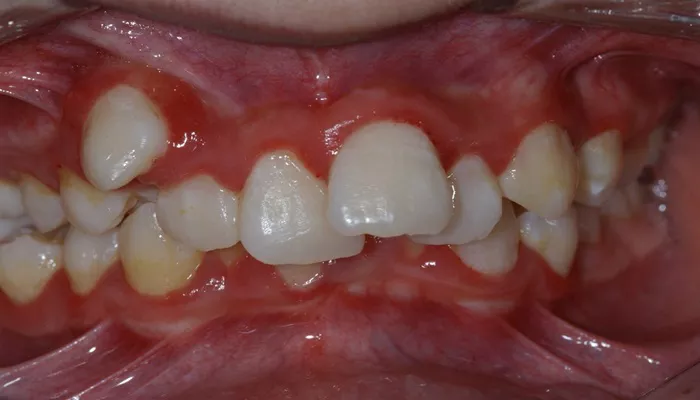Orthodontic treatment is a common dental procedure aimed at correcting misaligned teeth and jaws. While many patients hope to achieve a straight smile without any extractions, there are cases where tooth removal is necessary. This article will discuss which teeth are often extracted during orthodontic treatment, the reasons for these extractions, and the implications for patients.
What Is Orthodontic Treatment?
Orthodontic treatment involves the use of braces, clear aligners, or other appliances to move teeth into their proper positions. The goal is to improve the alignment of the teeth and jaws, enhance oral function, and create a more aesthetically pleasing smile.
Before starting treatment, orthodontists conduct a thorough examination, which may include X-rays, photographs, and dental impressions. This assessment helps determine the best course of action, including whether tooth extraction is necessary.
Reasons for Tooth Extraction in Orthodontics
Tooth extraction may be recommended for several reasons during orthodontic treatment:
1. Severe Crowding
One of the most common reasons for tooth extraction is severe crowding. When there is not enough space in the dental arch for all the teeth to fit properly, some teeth may need to be removed. This allows the remaining teeth to be repositioned more effectively.
2. Bite Issues
Bite problems, such as overbite, underbite, or crossbite, can also necessitate tooth extraction. In some cases, removing specific teeth can help achieve a better bite alignment, improving overall function and aesthetics.
see also: What to Eat with Orthodontic Spacers?
3. Impacted Teeth
Impacted teeth, particularly wisdom teeth, may require extraction if they are not able to emerge properly. This is often the case when there is insufficient space in the jaw. Removing impacted teeth can prevent complications and facilitate orthodontic treatment.
4. Facilitating Orthodontic Movement
In certain situations, extracting teeth can facilitate the movement of adjacent teeth. By creating space, orthodontists can more easily align teeth and achieve the desired results.
5. Aesthetic Considerations
For some patients, aesthetic considerations may lead to tooth extraction. For example, if a tooth is severely misaligned or protruding, removing it may enhance the overall appearance of the smile.
Commonly Extracted Teeth in Orthodontic Treatment
While any tooth can potentially be extracted during orthodontic treatment, certain teeth are more commonly removed.
These include:
1. First Premolars
First premolars are often extracted during orthodontic treatment.
These teeth are located between the canine teeth and the molars.
Extracting first premolars can help alleviate crowding and create space for the remaining teeth to align properly. This extraction is common in both adolescents and adults.
2. Second Premolars
In addition to first premolars, second premolars may also be extracted. Similar to first premolars, removing second premolars can help create space in the dental arch and improve alignment. This extraction is less common than first premolar extraction but may be necessary in certain cases.
3. Wisdom Teeth
Wisdom teeth, or third molars, are frequently extracted, especially in younger patients. These teeth often become impacted due to lack of space in the jaw. Removing wisdom teeth can prevent complications such as infection, crowding, and damage to adjacent teeth. Their extraction is often performed before or during orthodontic treatment.
4. Canines
In some cases, canines may be extracted. Canine teeth are located at the corners of the dental arch and play a crucial role in bite alignment.
However, if a patient has severe crowding or other bite issues, the orthodontist may recommend extracting a canine to facilitate proper alignment.
5. Incisors
While less common, incisors may be extracted in certain situations. This is typically considered when there is significant crowding, and other options have been exhausted. Extracting an incisor can help create space for the remaining teeth to align correctly.
The Extraction Process
If tooth extraction is deemed necessary, the process typically involves the following steps:
1. Consultation and Planning
Before the extraction, the orthodontist will conduct a thorough examination and discuss the reasons for the extraction with the patient. They will explain how the extraction will benefit the orthodontic treatment.
2. Anesthesia
To ensure the patient’s comfort, local anesthesia is administered to numb the area around the tooth being extracted. In some cases, sedation may be used for anxious patients.
3. Extraction Procedure
The dentist or oral surgeon will carefully remove the tooth. This may involve loosening the tooth with specialized instruments and then extracting it from the socket.
4. Post-Extraction Care
After the extraction, the orthodontist will provide instructions for post-operative care. This may include guidelines for managing pain, swelling, and dietary restrictions. It is important for patients to follow these instructions to ensure proper healing.
Implications of Tooth Extraction for Orthodontic Treatment
Tooth extraction can significantly impact the course of orthodontic treatment. Here are some key implications:
1. Space Creation
Extracting teeth creates space in the dental arch, allowing orthodontists to align the remaining teeth more effectively. This can lead to improved bite function and aesthetics.
2. Treatment Duration
In some cases, tooth extraction may shorten the overall duration of orthodontic treatment. By creating space, orthodontists can move teeth more efficiently, potentially leading to faster results.
3. Adjustment Period
After tooth extraction, patients may experience an adjustment period as their mouth adapts to the changes. This may involve temporary discomfort and changes in bite alignment until treatment progresses.
Conclusion
Tooth extraction is sometimes necessary during orthodontic treatment to achieve optimal results. Commonly extracted teeth include first and second premolars, wisdom teeth, canines, and incisors. Understanding the reasons for extraction and the implications for treatment can help patients make informed decisions about their orthodontic care. If you have concerns about tooth extraction or orthodontic treatment, it is essential to consult with an experienced orthodontist.

